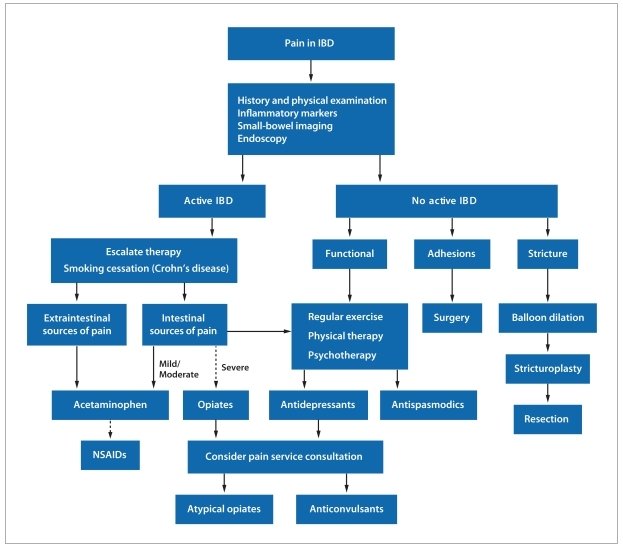
Pain: When does Acute turn into Chronic?
Pain. It’s all relative.
It was last Spring and I had just started on a new pain relief medication, after a stint in A&E. I was already on Amitriptyline and now we were adding Gabapentin into the mix. I had been living with my rectal stump for almost eighteen months at this point and every day it was getting more and more uncomfortable. With it’s intimate location, I was limited to what I could take to ensure I could get some respite from the pain. I’d also been doing steroid enemas to help with the mild inflammation from a scope a month previous. I was deep in regret at having a rectal stump and didn’t hold out much hope for Gabapentin, in all honesty.
But as I settled into a new routine of more pain relief, I saw a decline in my disrupted sleep and I feel okay for most of the days going forward. Great! I thought, finally something is going right for once. However, having to take medication around the clock – while at work, out on public transport, travelling to see family, while spending time with friends – it was difficult. I didn’t look as if I was in pain – or indeed struggling at all – but it was what I needed in order to function some days.
Finding the dosage that worked for me and figuring out the spacing of those doses was a real challenge.
But once I did, I forgot about what life should feel like without pain. It was controlled and managed but I lived with it every day.
Pain relief helped but it did not solve my pain issues.
Which begs a question I’ve been contemplating for over a year now;
“I’ve been in pain for so long, how do I know what it’s suppose to feel like?”
What can cause pain in IBD?
Unfortunately, pain is a common symptom of IBD, about 50%–70% of patients experiencing the initial onset or exacerbations of inflammatory bowel disease. It varies widely between people in general, so is not used a diagnostic tool to identify new IBD without other assessments, such as clinical presentation, laboratory work, radiology and endoscopic procedure/s; being used to complete a full evaluation.
In this article, however, the quadrants of the abdomen go along way to explaining the causes of pain related to IBD in each section:

Even after careful verification of clinical and endoscopic remission, 20% of patients will continue to have pain. Up to one-sixth of IBD patients are chronically treated with opioids.
While IBD is a biologically defined illness, pain in IBD patients is mediated by more than the biologically defined abnormalities. Thus, pain is an alarm symptom that should trigger appropriate evaluations if newly developed or significantly changing in intensity or character. However, it is important to note, pain may become a continuing problem even if the disease is controlled.
What does pain feel like?
We all experience pain to greater or lesser degrees at various points of our lives. It is said that pain is the most common reason patients seek medical attention. But, each of us perceives a given pain trigger in our own unique way. The intensity of the response to a pain is subjective, meaning the severity of the pain can most accurately be defined by the person with the pain, rather than by other observers.
 Pain is typically classified as either acute or chronic. Acute pain is of sudden onset and is usually the result of a clearly defined cause such as an injury. Acute pain resolves with the healing of its underlying cause. Chronic pain persists for weeks or months and is usually associated with an underlying condition and can range from mild to moderate, or severe.
Pain is typically classified as either acute or chronic. Acute pain is of sudden onset and is usually the result of a clearly defined cause such as an injury. Acute pain resolves with the healing of its underlying cause. Chronic pain persists for weeks or months and is usually associated with an underlying condition and can range from mild to moderate, or severe.
Macmillan have a very helpful article here about the ways in which different types of pain can be described to a medical professional and how they feel to a patient.
How can it be managed?
There are several categories of medications that are used for the treatment of chronic pain. In general, your primary physician, patient management specialist, or pharmacist may be to answer any questions about the dosage and side effects from these medications. The most commonly used medications can be divided into the following broad categories:
- Nonsteroidal Anti-inflammatory Drugs and Acetaminophen: There are many different types of nonsteroidal anti-inflammatory medications (NSAIDs), some of them (such as Ibuprofen and Aspirin) may be obtained over-the-counter. NSAIDs can be very effective for acute muscular and bone pain as well as some types of chronic pain syndromes. When taken for an extended period of time or in large quantities, they may have negative effects on the kidneys, clotting of blood, and gastrointestinal system. Bleeding ulcers is a risk of these medications.
- Antidepressants: (specifically the tricyclic antidepressants such as Amitriptyline or Duloxetine) The pain relieving properties of these medications are such that they can relieve pain in doses that are lower than the doses needed to treat depression. These medications are not meant to be taken on an “as needed” basis but must be taken every day whether or not you have pain and should never be taken in larger doses than are prescribed.
- Anticonvulsants (Anti-seizure) Medications: (such as Carbamazepine and Gabapentin) These medications can be very helpful for some kinds of nerve type pain. These medications also are not meant to be taken on an “as needed” basis. They should be taken every day whether or not you feel pain. Some of them may have the side effect of drowsiness which often improves with time. The newer anticonvulsants do not need liver monitoring but required caution if given to patients with kidney disease.
- Muscle Relaxants: These medications are most often used in the acute setting of muscle spasm. The most common side effect seen with these medications is drowsiness.
- Opioids: (such as Tramadol, Morphine, Dilaudid, Codeine, Vicodin, Methadone and Demerol) When used appropriately, opioids may be very effective in controlling certain types of chronic pain. They tend to be less effective or require higher doses in nerve type pain. For pain is present all day and night, a long acting opioid is usually recommended. Drowsiness is a common side effect which often gets better over time as you get used to the medication, but excessive drowsiness should be discussed with your doctor. Nausea is another side effect which may be difficult to treat and may require changing to another opioid.
Various combinations of many of the above have been used to successfully treat pain.

How to take action (acute into chronic)
- Take your medication. Simple but sometimes it’s so obvious it’s overlooked. Some pain relief works best if taken every single day, even if you are not in pain – see Antidepressants and Anticonvulsants.
- Set reminders. I use a medication reminder app on my iPhone to help me remember to take medications, especially if I am taking multiple ones, multiple times a day.
- Be honest. It can take from 72 hrs to 2 weeks for some pain relief to actually work. If within those two weeks, you develop symptoms which impact heavily on your Quality of Life, it is best to see your GP in the first instance, as soon as possible.
 There is no shame in needing medication. There has always been a strong stigma attached to needing pain relief for chronic pain. The fear of being labelled as ‘addicted’ or an ‘addict’ has caused many of those who actually need medication for regaining control of their pain to play it down; to both themselves and medical professionals. The below meme shows just how stigmatised it still can be.
There is no shame in needing medication. There has always been a strong stigma attached to needing pain relief for chronic pain. The fear of being labelled as ‘addicted’ or an ‘addict’ has caused many of those who actually need medication for regaining control of their pain to play it down; to both themselves and medical professionals. The below meme shows just how stigmatised it still can be.- It can be trial and error. Sometimes you might need a couple of attempts at getting the right combination and dosage of medications to help your pain. This is somewhat common and the goal of taking pain relief is to relief pain – this is might not happen with just one appointment, it will be an ongoing thing. Also, be prepared for it to be reviewed by your GP on a regular basis, so please keep up to date with your repeat prescription process and for your dispensing pharmacist to keep checking you when you collect certain medications – see Opiates and Controlled Drugs such as Morphine (UK)
Recommendation from this article is particularly key:
“The first step in treating pain in IBD should always be to evaluate the patient for active disease. If escalation of IBD therapy does not relieve symptoms, then over-the-counter analgesics may be initiated. Care should be taken to rule out complications such as strictures or adhesions that will respond only to surgery. Given that anxiety and depression are frequent comorbidities of IBD, formal psychiatric evaluation and treatment can be helpful. The use of an antidepressant, especially a TCA, may help with pain even in the absence of a psychiatric diagnosis. Opiates should be used with caution in IBD patients, preferably for a well-defined interval such as during induction of remission or during the postoperative period. If opiates are used, patients should be given an opiate contract that clearly delineates all expectations and requirements, and a single physician should prescribe all pain medications.”
Do you have any questions or queries? Or just want to share your own experiences? You can leave me a reply here or leave comments via my social media accounts – on Twitter, find my blog page on Facebookand over on Instagram
Further Reading:
- What are the Early Warning Sights of an IBD Flare Up?
- Very Well Health – What Inflammatory Bowel Disease Pain Feels Like
- NCBI, Gastroenterology & Hepatology – Managing Pain in Inflammatory Bowel Disease (Sept 2011)
- NCBI, PLOS – Pain in IBD Patients (2016)
- NCBI, Pain and Inflammatory Bowel Disease (May 2009)
- British Journal of Anaesthesia – When does Acute Pain become Chronic? (Dec 2010)
- Macmillian Cancer Support – Types of Pain and How to Talk about Them





1 Comments
"Can having IBD be painful?" •
03/02/2021 at 09:30
[…] you enjoyed this post check out Pain: When does Acute turn into Chronic? and Flare up […]